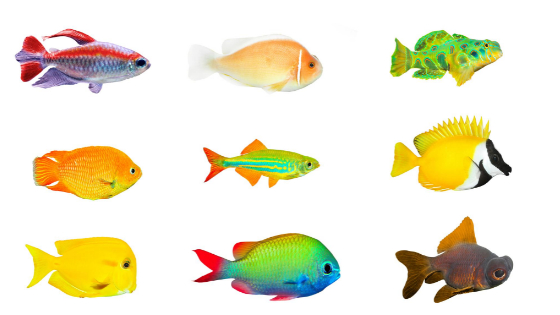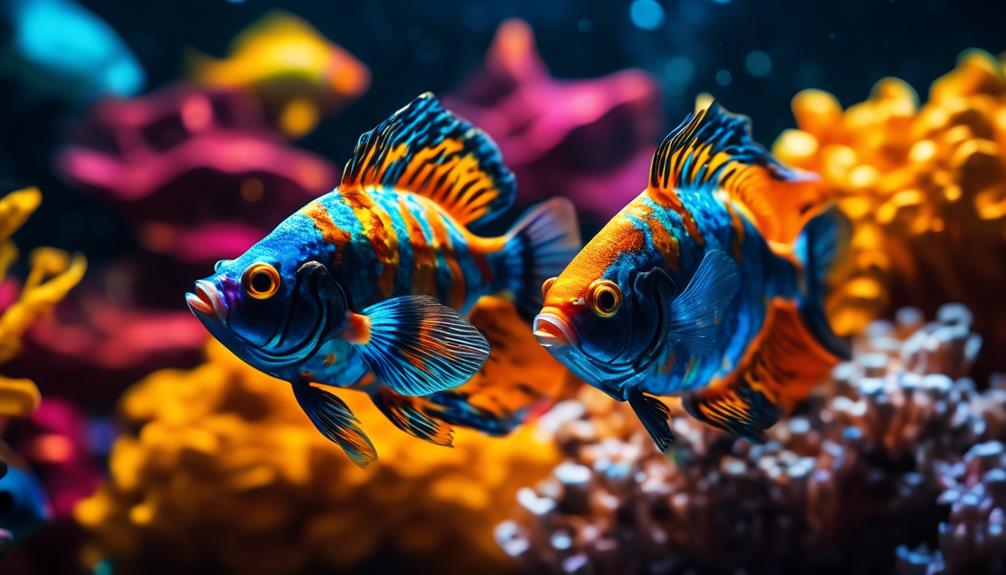
Looking to add a touch of vibrant elegance to your aquarium? Curious about the breed that has aquarium enthusiasts buzzing? Look no further than the Molly fish.
With its eye-catching colors and serene temperament, this species has taken the aquarium world by storm. But what sets them apart from other fish? How do they add that extra dash of beauty to your tank?
Allow us to introduce you to the captivating world of Molly fish.
Key Takeaways
- Molly fish are a popular species of livebearers in the aquarium hobby, known for their rectangular body shape and upturned mouth.
- There are different varieties of molly fish, including Sailfin Molly, Shortfin Molly, and Black Molly, which come in various colors like black, orange, and white.
- Molly fish originate from Central America and are found in brackish water environments, but they can adapt to both marine and freshwater aquariums.
- Molly fish are relatively easy to care for, making them suitable for beginners, and they are peaceful and can be kept in community tanks with other compatible fish species.
Molly Fish Description
Molly fish are known for their distinctive features and vibrant colors. These popular livebearers have a short, rectangular body and an upturned mouth. The males are slimmer in shape compared to the females and have a modified anal fin used in mating.
Molly fish come in a variety of colors, including black, orange, and white. There are also different varieties of molly fish, such as Sailfin Molly, Shortfin Molly, and Black Molly.
Molly fish originate from Central America and are found in brackish water environments like estuaries. They prefer hard, slightly base water conditions in the aquarium and can survive in both marine and freshwater tanks.
Molly fish are relatively easy to care for, making them suitable for beginners.
Molly Fish Varieties
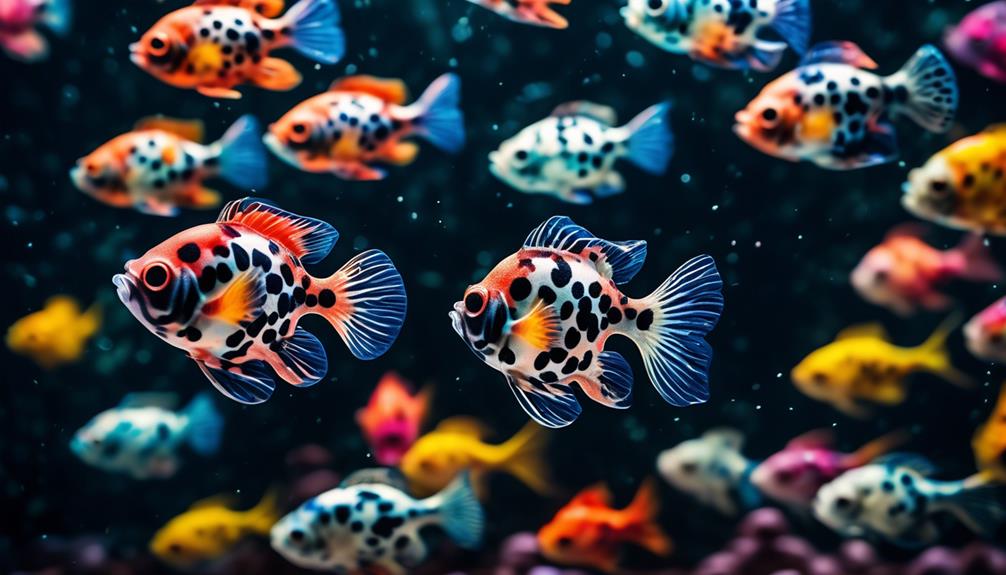
With a variety of captivating colors and unique characteristics, the different types of molly fish are sure to add vibrant diversity to your aquarium. Molly fish come in various varieties, each with its own distinct features.
One popular variety is the Sailfin Molly, known for its large, sail-like dorsal fin that adds elegance to its appearance.
Another variety is the Shortfin Molly, which has a shorter and more compact body compared to other molly fish.
Then there’s the Black Molly, which is characterized by its striking black coloration that can create a dramatic contrast in your tank.
These different varieties of molly fish not only bring visual appeal but also contribute to a harmonious and dynamic ecosystem in your aquarium.
Molly Fish Origins

Originating from Central America, molly fish are a popular species of livebearers in the aquarium hobby. They’ve a rich history and fascinating origin story that adds to their appeal. Here are some key points about the origins of molly fish:
- Molly fish are native to Central America, specifically the waters of Mexico and surrounding areas.
- They inhabit brackish water environments like estuaries, where the salt content is higher than freshwater but lower than seawater.
- Molly fish have adapted to survive in both marine and freshwater conditions, making them versatile and adaptable.
- In the aquarium, molly fish prefer hard, slightly alkaline water conditions, reflecting their natural habitat.
- The popularity of molly fish in the aquarium hobby has spread globally, thanks to their vibrant colors, interesting behavior, and ease of care.
The origins of molly fish provide insight into their natural habitat and help aquarium enthusiasts recreate suitable conditions for these colorful and lively fish.
Molly Fish Care
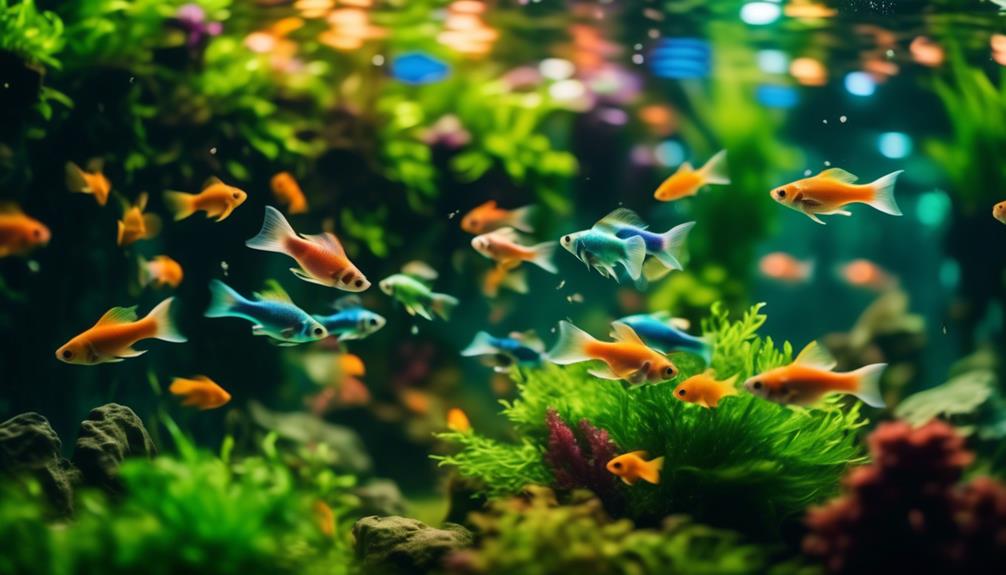
Now let’s focus on the essential aspect of caring for molly fish in your aquarium.
Molly fish are relatively easy to care for, making them suitable for beginners. They prefer hard, slightly base water conditions in the aquarium and can survive in both marine and freshwater tanks.
It’s recommended to have a medium-sized aquarium of at least 30 gallons for them. Molly fish should be kept with other livebearers of comparable size or larger, more assertive fish, as they can be a bit aggressive towards fish with long flowing finnage.
They’re known to be prolific breeders, so it’s important to provide hiding places for the fry to survive.
Molly fish are herbivores and can be fed on a diet of vegetable-based flakes and algae. Adding a little sea salt to the aquarium can stimulate the breeding process.
Suitable Tank Mates for Molly Fish
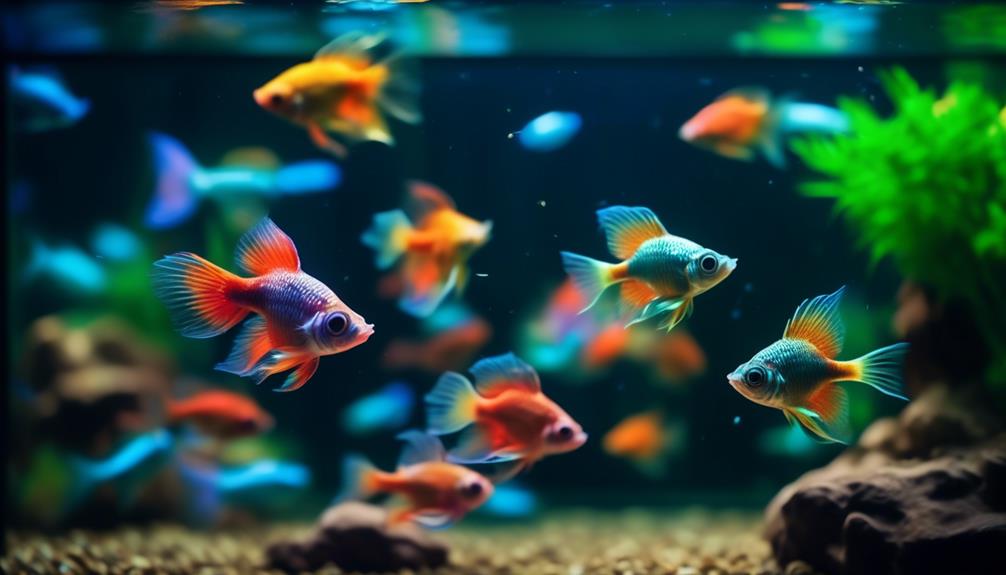
To create a harmonious aquarium environment, it’s important to carefully select suitable tank mates for your Molly fish. Here are some options to consider:
- Platys: These colorful fish are peaceful and get along well with mollies. They also prefer similar water conditions.
- Swordtails: These fish have a similar shape to mollies and can coexist peacefully in the same tank.
- Guppies: These small, vibrant fish are compatible with mollies and add a lively touch to the aquarium.
- Other small livebearers: Molly fish can also be kept with other species of livebearers, such as endlers or mosquito fish.
- Corydoras catfish: These bottom-dwelling fish are peaceful and can help keep the tank clean by scavenging for food.
Molly Fish Behavior
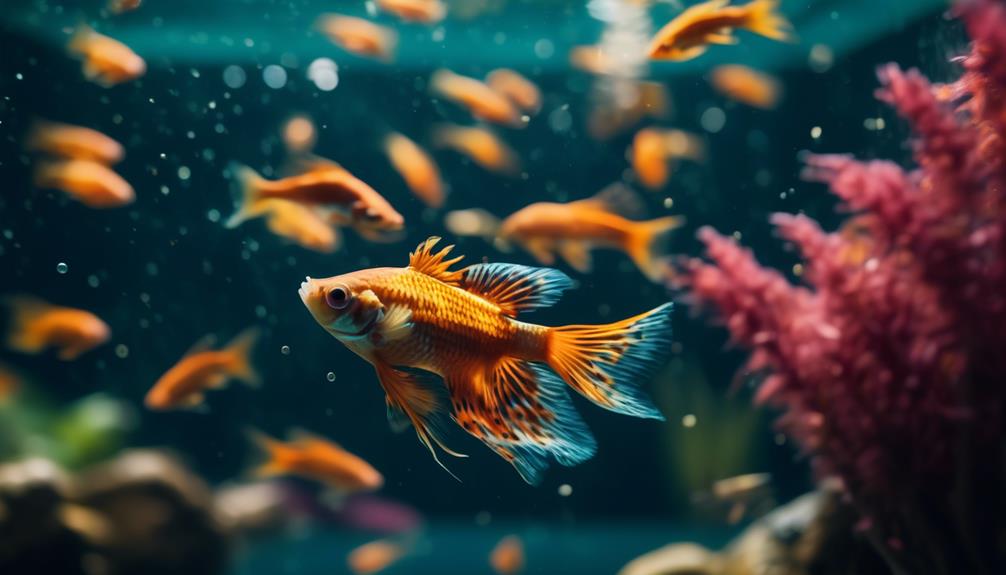
Placing Molly fish in a community tank with suitable tank mates is just the beginning; understanding their behavior is crucial for maintaining a harmonious aquatic environment. Molly fish are generally peaceful and suitable for community tanks, but they may harass fish with long flowing finnage. To ensure compatibility, it is best to keep Molly fish with other livebearers of comparable size or larger, more assertive fish. Additionally, Molly fish are known to be prolific breeders and can quickly overpopulate an aquarium. To prevent this, it is important to provide hiding places for the fry to survive. By understanding and accommodating Molly fish behavior, you can create a vibrant and balanced aquarium ecosystem.
| Behavior | Description |
|---|---|
| Peaceful | Generally peaceful and suitable for community tanks |
| Fin-nipping | May harass fish with long flowing finnage |
| Compatibility | Best kept with other livebearers of comparable size or larger, more assertive fish |
| Prolific Breeding | Known to be prolific breeders and can quickly overpopulate an aquarium |
| Fry Survival | Provide hiding places for the fry to survive |
Molly Fish Breeding
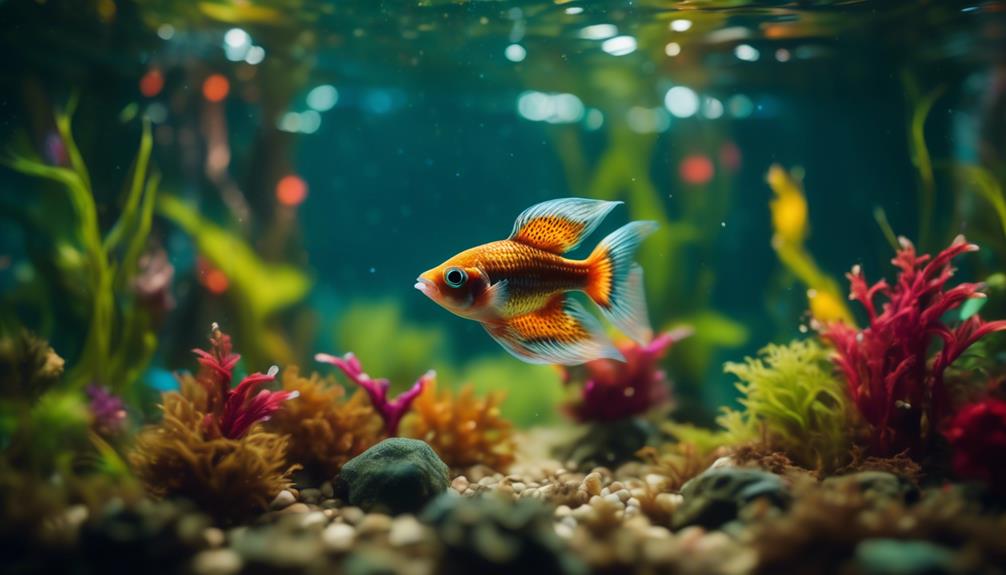
Breeding Molly fish is an exciting and rewarding process that allows you to witness the growth and development of these prolific livebearers. Here are some important things to consider when breeding Molly fish:
- Separate males and females: To initiate breeding, it’s crucial to keep male and female Molly fish together in the same tank.
- Provide hiding places: Create hiding places in the aquarium, such as plants or caves, for the fry to survive and grow.
- Stimulate breeding with salt: Adding a little sea salt to the aquarium can stimulate the breeding process and increase the chances of successful reproduction.
- Monitor water conditions: Maintain optimal water conditions, including temperature, pH, and hardness, to ensure the health and well-being of the Molly fish during breeding.
- Feed a balanced diet: Provide a varied diet of vegetable-based flakes and algae to ensure proper nutrition for Molly fish during the breeding process.
Breeding Molly fish can be a fascinating experience that allows you to observe the wonders of life in your aquarium. With proper care and attention, you can enjoy the beauty and excitement of a growing Molly fish population.
Molly Fish Diet
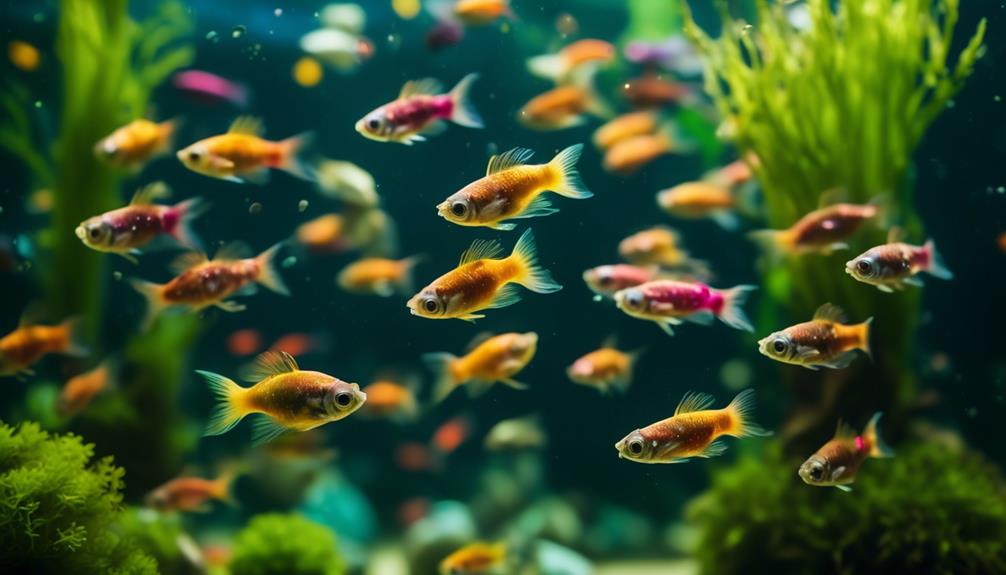
If you’re looking to provide optimal nutrition for your Molly fish, it’s important to understand their dietary needs. Molly fish are herbivores and can be fed a diet of vegetable-based flakes and algae. It is also recommended to provide them with hiding places for the fry to survive. Additionally, adding a little sea salt to the aquarium can stimulate the breeding process. To summarize, the Molly fish diet should consist of the following:
| Food Type | Description |
|---|---|
| Vegetable-based flakes | Provides essential nutrients for Molly fish |
| Algae | A natural food source for Molly fish |
| Sea salt | Stimulates breeding and enhances overall health |
Molly Fish Popularity
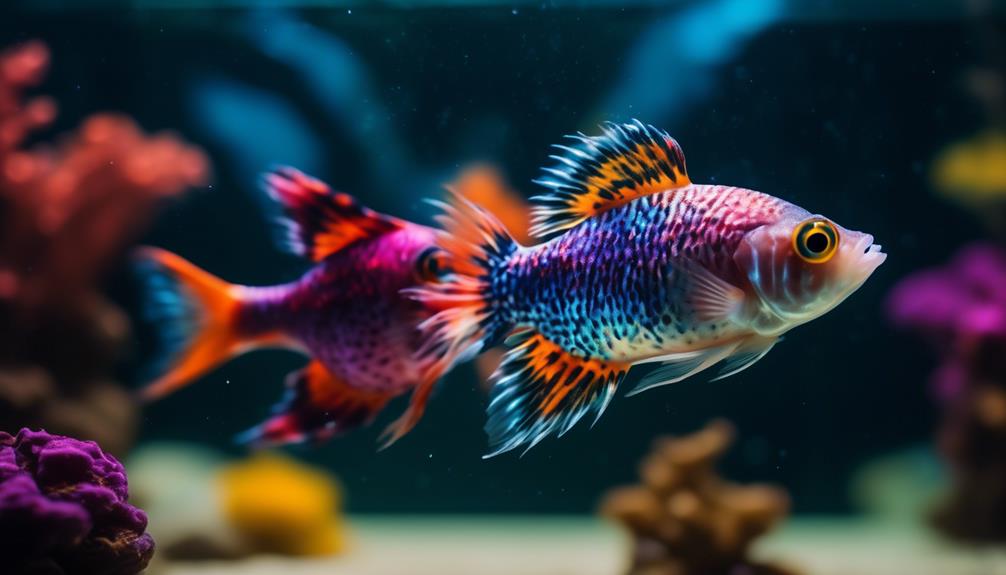
Molly fish have gained widespread popularity among aquarium enthusiasts due to their vibrant colors and ease of care. These charming fish have become a favorite choice for many reasons:
- Molly fish come in a wide variety of colors, including black, orange, and white, adding a splash of vibrancy to any aquarium.
- They’re relatively easy to care for, making them suitable for beginners who are just starting out in the world of fishkeeping.
- Molly fish are peaceful and can coexist with other fish in community tanks, as long as they aren’t long-finned species.
- These fish are known for their prolific breeding habits, providing enthusiasts with the joy of witnessing new life in their aquariums.
- Molly fish are adaptable and can survive in both marine and freshwater aquariums, making them a versatile choice for any setup.
With their stunning colors and low-maintenance care requirements, it’s no wonder that Molly fish have become a popular choice among aquarium enthusiasts.
Molly Fish Features
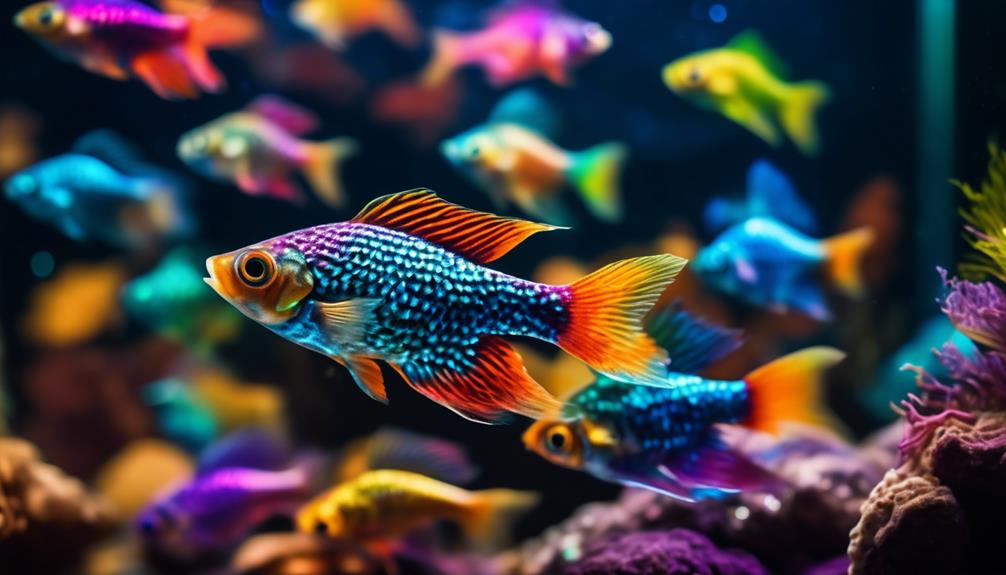
With their stunning colors and adaptability, Molly fish possess a mesmerizing array of features that make them a captivating addition to any aquarium.
One of their notable features is their short, rectangular body and upturned mouth, giving them a unique appearance. Male mollies are slimmer in shape compared to females and have a modified anal fin used in mating.
The Molly fish comes in various colors, including black, orange, and white, adding vibrancy to any tank. There are also different varieties of Molly fish, such as the Sailfin Molly, Shortfin Molly, and Black Molly.
Their striking colors and distinct body shapes make them a popular choice among aquarium enthusiasts, creating a visually appealing and dynamic underwater environment.
Setting up the Ideal Molly Fish Aquarium
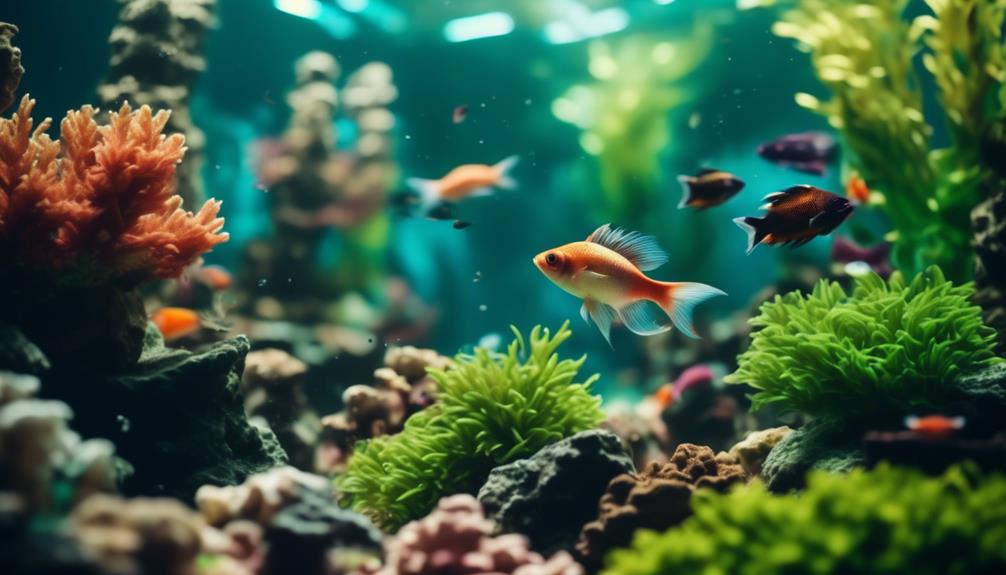
To create the perfect habitat for Molly fish, consider the following key elements in your aquarium setup:
- Tank size: Molly fish require a medium-sized aquarium, preferably around 30 gallons, to provide enough space for swimming and socializing with tank mates.
- Water conditions: Molly fish prefer hard, slightly alkaline water. Adding a little sea salt to the aquarium can help replicate their natural brackish water environment.
- Tank mates: Molly fish are peaceful and can be kept with other livebearers of similar size or larger, as well as more assertive fish. Platys, swordtails, and guppies make suitable tank mates.
- Plants and hiding places: Molly fish benefit from heavily planted aquariums that provide hiding places for fry survival. Ensure there are also ample open swimming spaces.
- Diet: Molly fish are herbivores and require a diet of vegetable-based flakes and algae. Providing a varied diet is essential for their health and wellbeing.
Tips for Maintaining a Healthy Molly Fish Habitat
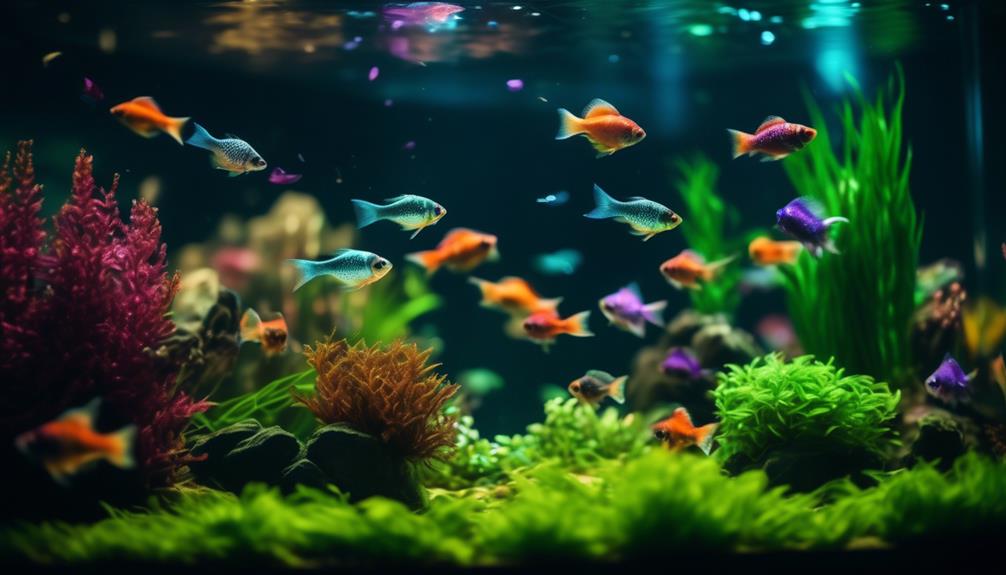
Creating a healthy habitat for your Molly fish involves maintaining key elements in your aquarium setup. Here are some tips to ensure the well-being of your Molly fish:
| Key Elements | Maintenance Tips |
|---|---|
| Water Quality | Regularly test the water parameters (pH, ammonia, nitrite, and nitrate levels) and perform water changes to keep them at appropriate levels. |
| Temperature | Maintain a stable water temperature between 72-78°F (22-26°C) to mimic their natural habitat. Use a reliable thermometer to monitor the temperature. |
| Filtration | A good filtration system is essential for removing waste and maintaining water quality. Clean or replace filter media regularly to prevent clogs and ensure efficient filtration. |
| Lighting | Provide a suitable lighting system that mimics natural daylight. Avoid excessive exposure to direct sunlight, as it can cause algae growth. |
Common Issues and Solutions for Molly Fish Owners
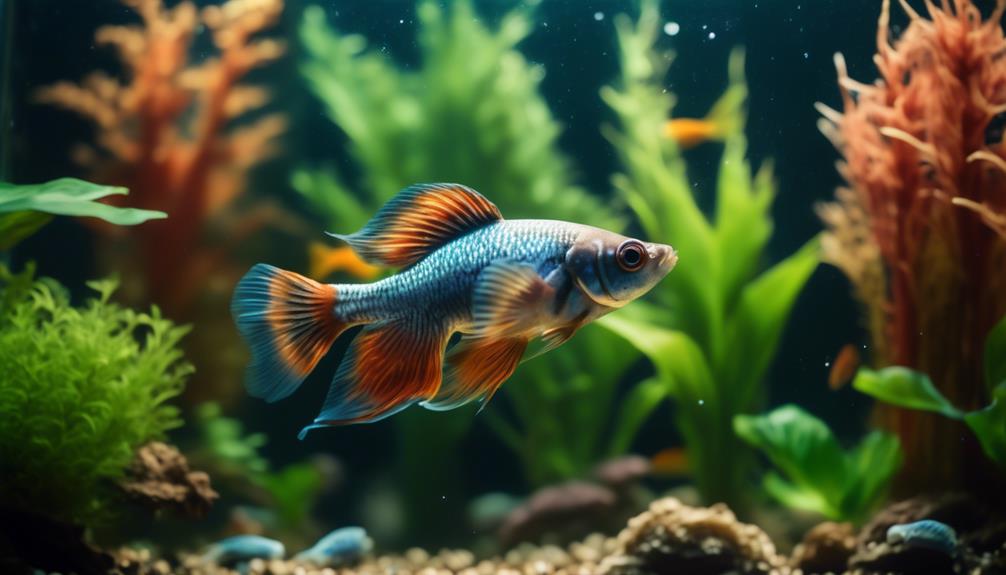
Common issues can arise for Molly fish owners, but there are solutions to help address these problems. Here are some common issues and their solutions:
- Disease: Molly fish are prone to diseases like ich and fin rot. To prevent and treat these diseases, maintain good water quality, provide a balanced diet, and quarantine new fish before introducing them to the tank.
- Aggression: Molly fish can sometimes exhibit aggressive behavior towards other fish. To reduce aggression, provide plenty of hiding places and open swimming spaces, and ensure that the tank isn’t overcrowded.
- Breeding issues: Molly fish are prolific breeders, but sometimes they may have trouble breeding or the fry may not survive. To promote successful breeding, maintain optimal water conditions, provide hiding places for the fry, and consider separating the fry from the adults to increase their chances of survival.
- Poor growth: If your Molly fish aren’t growing properly, check the water parameters and ensure they’re getting a balanced diet. Adding supplements like calcium can also promote healthy growth.
- Stress: Molly fish can become stressed due to factors like poor water quality, overcrowding, or aggressive tank mates. To reduce stress, maintain good water quality, provide a suitable tank environment, and choose compatible tank mates.
Fun Facts About Molly Fish
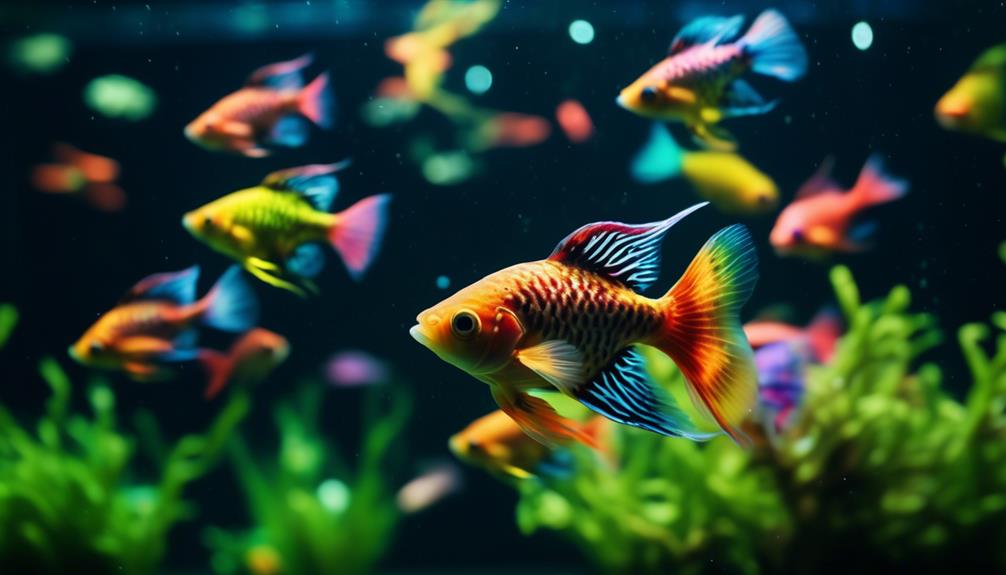
If you’re a fan of Molly fish, you’ll be delighted to learn some fascinating fun facts about these colorful aquarium breed. Molly fish are known for their vibrant colors and interesting behaviors. Did you know that Molly fry are free swimming at birth and can be fed on crushed flakes or algae? Here are some more fun facts about Molly fish:
| Fun Fact | Description |
|---|---|
| 1. Prolific Breeders | Molly fish are known to be prolific breeders and can quickly overpopulate an aquarium. |
| 2. Herbivores | Molly fish are herbivores and can be fed on a diet of vegetable-based flakes and algae. |
| 3. Brackish Water Tolerance | Molly fish can survive in both marine and freshwater aquariums, but they prefer brackish water environments like estuaries. |
| 4. Peaceful Species | Molly fish are peaceful and suitable for community tanks, but they may harass fish with long flowing finnage. |
| 5. Popular Choice | Molly fish are a popular choice among aquarium enthusiasts for their vibrant colors and ease of care. |
Molly fish are not only beautiful to look at but also fascinating creatures to observe in your aquarium.
Frequently Asked Questions
How Many Different Varieties of Molly Fish Are There?
There are different varieties of molly fish, including Sailfin Molly, Shortfin Molly, and Black Molly. They come in various colors like black, orange, and white, making them a colorful choice for aquarium enthusiasts.
What Is the Ideal Tank Size for Molly Fish?
The ideal tank size for molly fish is around 30 gallons. This provides enough space for them to swim comfortably and for the addition of suitable tank mates.
Can Molly Fish Live in Both Saltwater and Freshwater Environments?
Yes, molly fish can live in both saltwater and freshwater environments. They are adaptable and can survive in a variety of water conditions, making them a versatile choice for aquariums.
What Are Suitable Tank Mates for Molly Fish?
Suitable tank mates for Molly fish include platys, swordtails, guppies, and other small livebearers. Keep them with fish of comparable size or larger, more assertive fish to prevent harassment.
How Can I Stimulate Breeding in My Molly Fish?
To stimulate breeding in your Molly fish, you can add a little sea salt to the aquarium. Providing hiding places for the fry to survive can also help. Molly fish are known to be prolific breeders.
What Makes Molly Fish a Popular Choice for Aquariums?
Mollies for aquarium fish are a popular choice due to their peaceful nature and vibrant colors. They are known for their ability to adapt to a variety of water conditions, making them low-maintenance pets. Additionally, they are sociable and get along well with other fish, making them an ideal addition to any aquarium.
Conclusion
In conclusion, if you’re looking to add a vibrant and peaceful fish to your aquarium, the Molly fish is the perfect choice.
With its stunning colors and easy care requirements, it’s no wonder that this breed has taken the aquarium world by storm.
Whether you’re a beginner or an experienced aquarist, the Molly fish is sure to bring beauty and tranquility to your tank.
So don’t hesitate, add a Molly fish to your aquarium today and be amazed by their beauty and charm.




